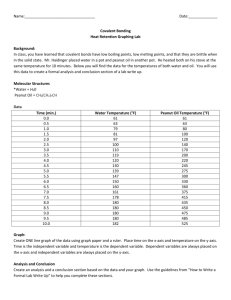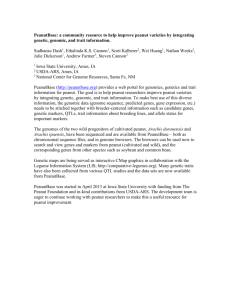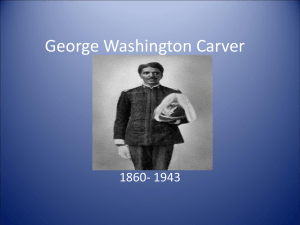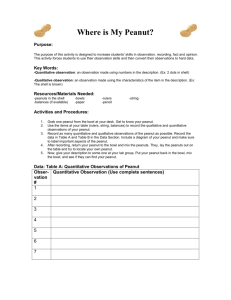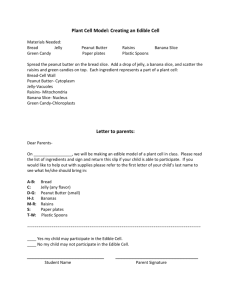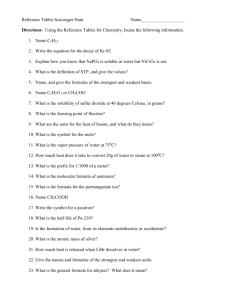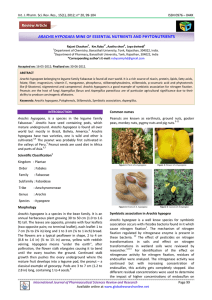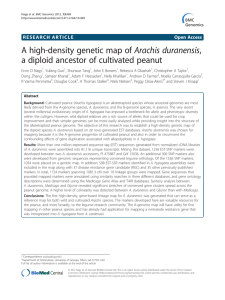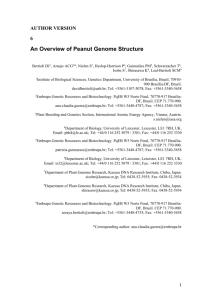Abstract - PeanutBase
advertisement
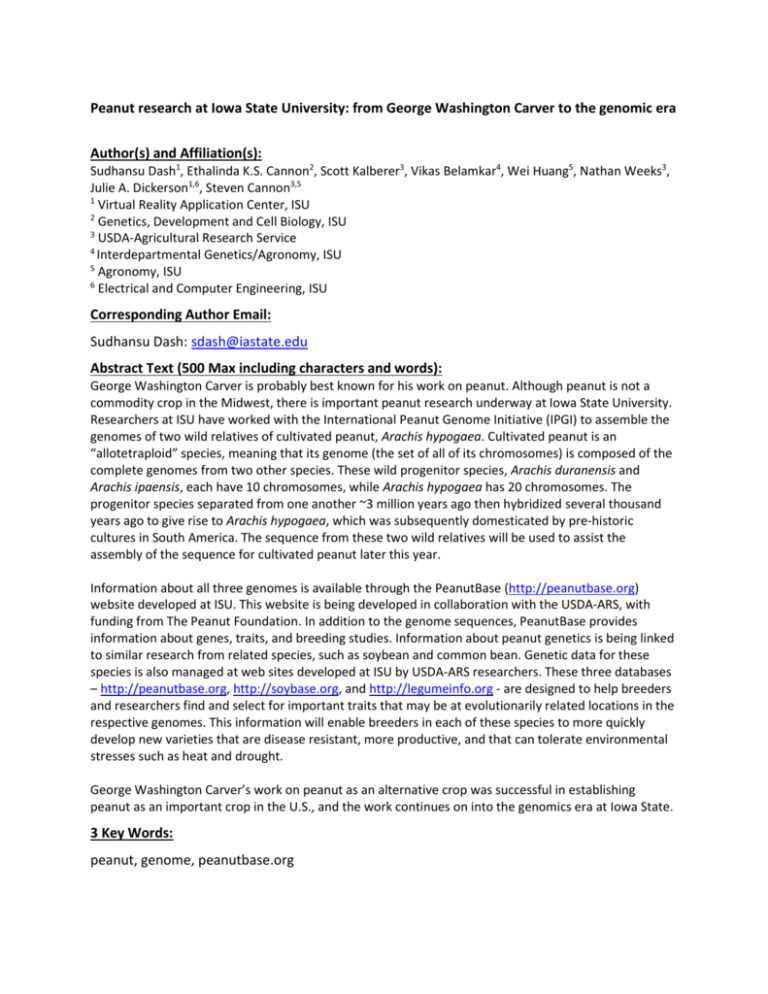
Peanut research at Iowa State University: from George Washington Carver to the genomic era Author(s) and Affiliation(s): Sudhansu Dash1, Ethalinda K.S. Cannon2, Scott Kalberer3, Vikas Belamkar4, Wei Huang5, Nathan Weeks3, Julie A. Dickerson1,6, Steven Cannon3,5 1 Virtual Reality Application Center, ISU 2 Genetics, Development and Cell Biology, ISU 3 USDA-Agricultural Research Service 4 Interdepartmental Genetics/Agronomy, ISU 5 Agronomy, ISU 6 Electrical and Computer Engineering, ISU Corresponding Author Email: Sudhansu Dash: sdash@iastate.edu Abstract Text (500 Max including characters and words): George Washington Carver is probably best known for his work on peanut. Although peanut is not a commodity crop in the Midwest, there is important peanut research underway at Iowa State University. Researchers at ISU have worked with the International Peanut Genome Initiative (IPGI) to assemble the genomes of two wild relatives of cultivated peanut, Arachis hypogaea. Cultivated peanut is an “allotetraploid” species, meaning that its genome (the set of all of its chromosomes) is composed of the complete genomes from two other species. These wild progenitor species, Arachis duranensis and Arachis ipaensis, each have 10 chromosomes, while Arachis hypogaea has 20 chromosomes. The progenitor species separated from one another ~3 million years ago then hybridized several thousand years ago to give rise to Arachis hypogaea, which was subsequently domesticated by pre-historic cultures in South America. The sequence from these two wild relatives will be used to assist the assembly of the sequence for cultivated peanut later this year. Information about all three genomes is available through the PeanutBase (http://peanutbase.org) website developed at ISU. This website is being developed in collaboration with the USDA-ARS, with funding from The Peanut Foundation. In addition to the genome sequences, PeanutBase provides information about genes, traits, and breeding studies. Information about peanut genetics is being linked to similar research from related species, such as soybean and common bean. Genetic data for these species is also managed at web sites developed at ISU by USDA-ARS researchers. These three databases – http://peanutbase.org, http://soybase.org, and http://legumeinfo.org - are designed to help breeders and researchers find and select for important traits that may be at evolutionarily related locations in the respective genomes. This information will enable breeders in each of these species to more quickly develop new varieties that are disease resistant, more productive, and that can tolerate environmental stresses such as heat and drought. George Washington Carver’s work on peanut as an alternative crop was successful in establishing peanut as an important crop in the U.S., and the work continues on into the genomics era at Iowa State. 3 Key Words: peanut, genome, peanutbase.org
